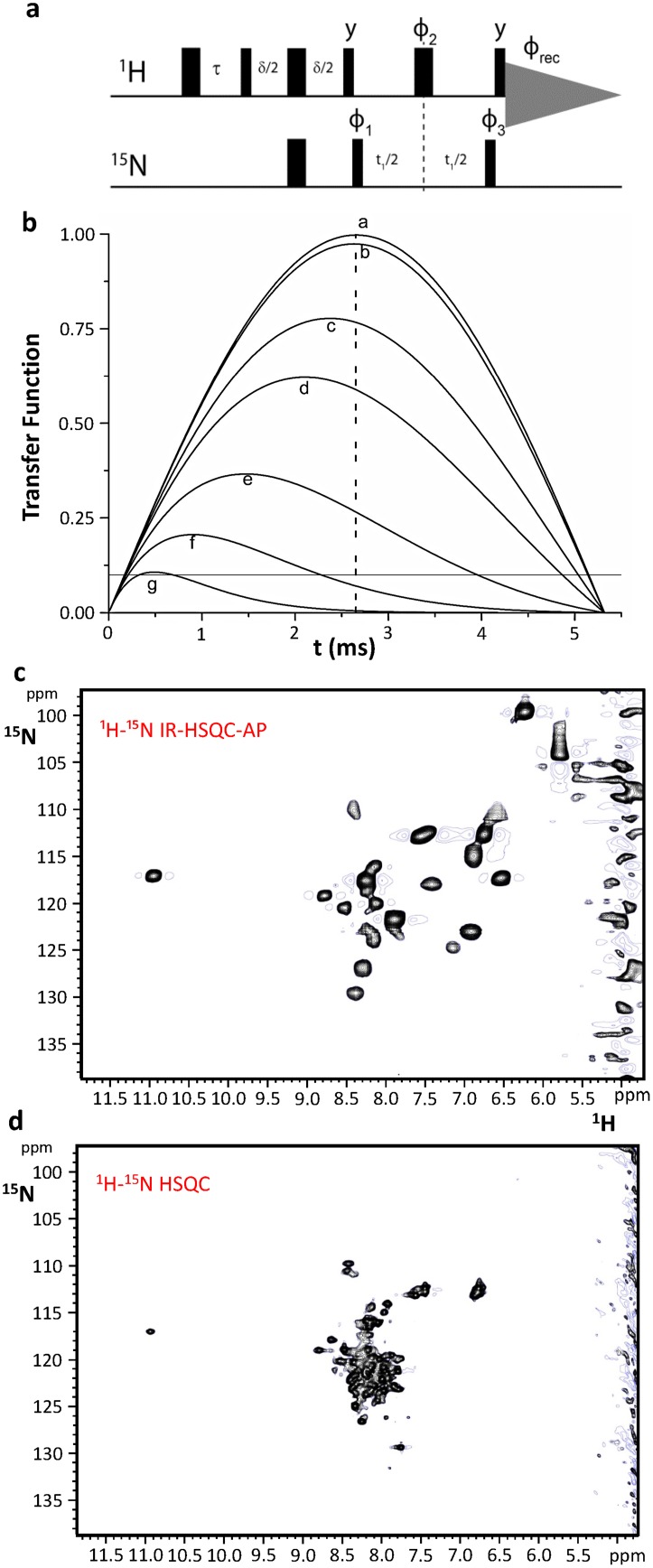Fig. 3.
The 1H–15N IR-HSQC-AP NMR experiment: a new tool for paramagnetic Fe–S proteins. Schematic drawings of the pulse sequence of the 1H–15N IR-HSQC-AP NMR experiment. The inversion recovery delay τ and the coherence transfer delay δ must be chosen according to, respectively, T1 and T2 relaxation properties of the signals of interest. b Efficiency of an INEPT transfer function at different 1H T2 values: b 100 ms, c 10 ms, d 5 ms, e 2 ms, f 1 ms, g 0.5 ms. Relaxation is neglected in a. Letters have been drawn at the correspondence of the maximum values for each transfer function. A dashed line is shown at the 2.65 ms of INEPT step (94 Hz for 1H–15N J coupling). A solid line is shown in correspondence of 10% transfer efficiency. The latter is a limit threshold below which direct excitation of 15N spins should replace the INEPT step in the first part of the sequence. c Optimized 1H–15N IR-HSQC-AP experiment vs. d standard 1H–15N HSQC experiment acquired on 500 MHz at 298 K on the [2Fe–2S]2+-CIAPIN1 domain of human anamorsin

